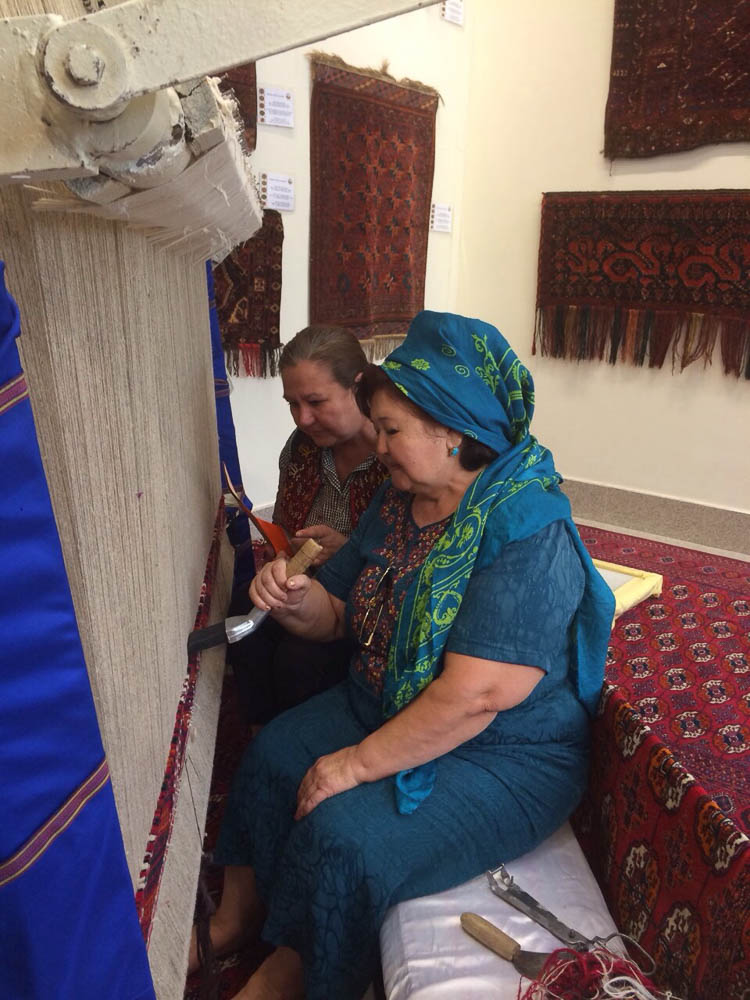
Among the various forms of Turkmen crafts, carpet making is the most advanced and richest of all. Following the Silk Road, merchants bought finest carpets as they were passing Turkmen lands. At a time, they were widely known as the Bukhara carpets, because they were primarily sold and could be found there. First written reference on Turkmen carpets can be found as early as thirteenth century, made by Italian explorer Marco Polo.
Carpets and tapestries related to the nomadic way of life. They weren’t mere mats for sitting on, replacing furniture. They also satisfied the aesthetic demands of people.
Chuvaly, hordjun and torba bags were used for keeping clothes or transporting goods. They replaced sacks and pouches. Tapestries were used to embellish horse or a camel. They were also used to adorn nomadic dwelling or decorate wedding cortege. Household use of the tapestry has determined its form and shape. Ornament of the tapestry is characterised by its tribal origin. All Turkmen carpets share certain common features. Ornaments of Turkmen carpets have distinct and clear geometric lines and rich colouring where shades of red colour prevail. Most widespread carpets belong to and originate from teke, yomud and ersary tribes. Basic patterns (geli) are bordered by edging, whose small scale patterns differ from the patterns in the centre of the carpet.

The best material used for production of carpets is the white wool of famous saradjyn breed of sheep. Wool of spring shearing is used for basis and for pile. In some cases, cotton yarn is used with the wool. Wool is dyed from a variety of natural and synthetic sources. Pile carpet consists of a mesh made up of basis and weft. Close fitting small knots are tied to the threads of the basis. Sesquialteral and double knots are peculiar to Turkmen carpets.
Tapestry correlates to everyday life. One such typical example is carpet curtain for the door of the yurt (ensi), adornment of the yurt entrance (gapalyk), and ornament within (termech). However, tapestry was used not only for yurt. It was also used to decorate horses and camels of wedding cortege. This includes the rug for the horse (at haly), saddlecloth (ichirgi) and wedding embellishments for the camel (asmalyk), various size bags that replaced cupboard for dishes and kitchenware (torba), tapestry travel bag (hordjun), and a large bag from tapestry used to store clothes (chuvaly). Items made from tapestry, just like carpets, had vivid tribal ornamental patterns. Average carpet pitch, depending on type of the carpet, may vary from 122 to 340 thousand knots in each square meter. Carpet making traditions were passed from generation to generation. Technical perfection, artistry, finesse and vibrant colour combination are all features inherent to carpets and tapestry of Turkmen artisans.




